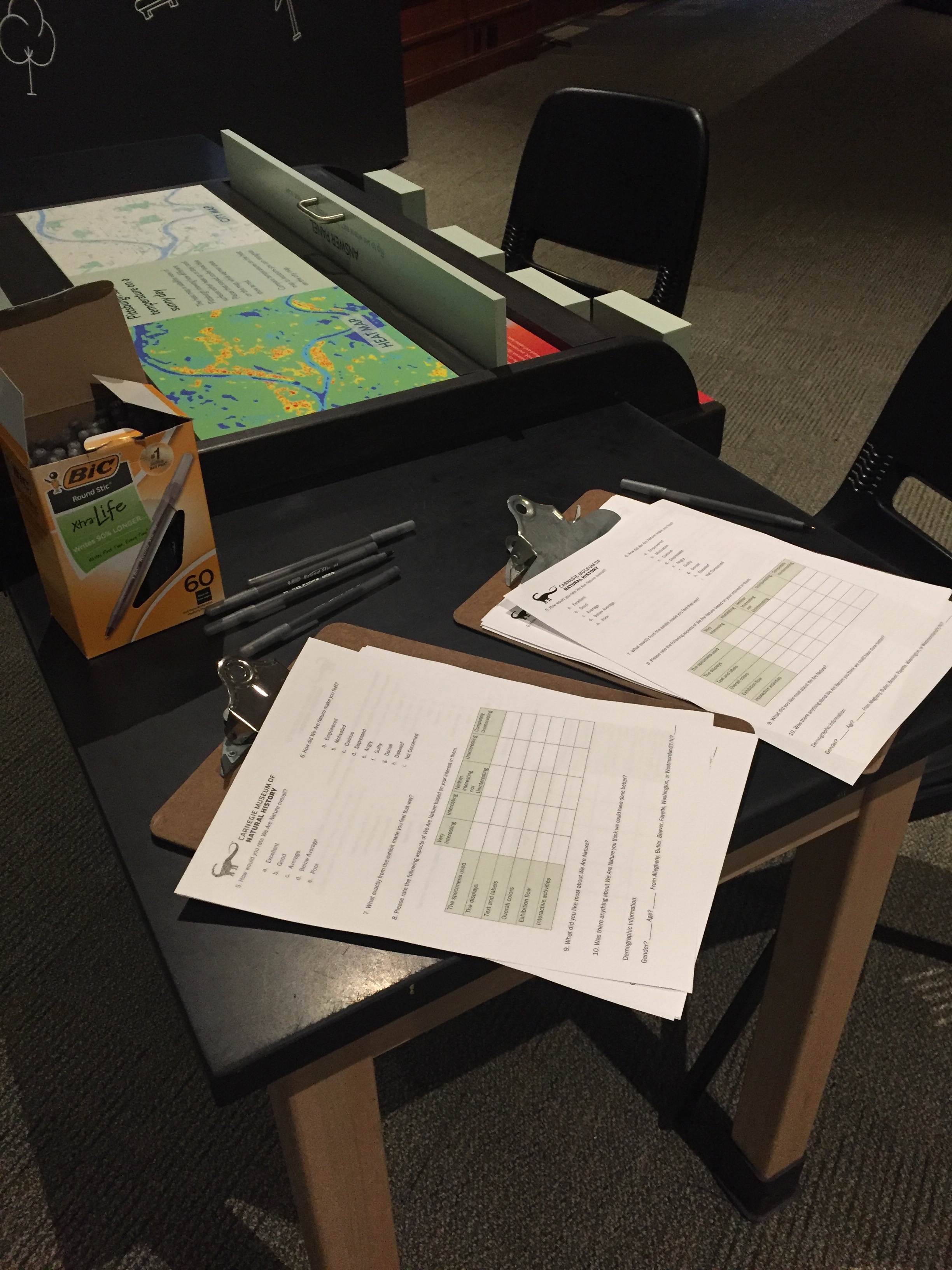Museum Studies Intern at the Carnegie Museum of Natural History – Spring 2018
Thousands of visitors of different ages visit the Carnegie Museum of Natural History every year. As the Museum Studies intern in their Marketing Department, it was my job to ask these visitors about their experience in the museum. My work was overseen by Kate Sallada, Marketing Researcher, and Kathleen Bodenlos, Director of Marketing and Public Relations.
The best days to collect surveys are weekends because a much greater portion of the population is represented. Families are common on Saturdays and Sundays, especially in the Natural History museum where kids can engage with many of the exhibits.
I collected surveys for the recently installed exhibit, We Are Nature: Living in the Athropocene, throughout my internship. The day that I was able to collect the highest volume of surveys was a very cold Sunday in February. I surveyed over 50 visitors over the course of 4 hours.
When crafting a survey for the general public, it must be accessible to as many people as possible. Those visiting from other countries or unable to speak English fluently were able to understand the simple survey instructions, and could ask me questions about any sections that needed further verbal explanation.
In addition to the surveys, the exhibit had several interactive stations where guests could leave their thoughts. One station asked visitors to make associations with a certain emotion, such as “Empowered’ or “Angry,” and visitors could write down their opinions about the exercise on a corresponding Sticky-Note.
The exhibit also featured many dry-erase surfaces where visitors were prompted to write down words or phrases based on a question. These responses were often documented by a photographer before they were erased to make room for new feedback.
After surveying general opinions about the exhibit, we also sought feedback on the marketing campaign we were developing. Many of those leaving the exhibit reported that they felt “empowered,” which was a feeling we wanted to reinforce in our marketing strategy. One plan was to change the main photograph on our signage from one of crushed cardboard boxes to a sunny image of a small child holding a sapling. This image was more representative of the visitor experience than that of our previous campaign, according to the reactions from the surveys.
This experience has given me vital information about how to interact properly with the public in an art institution, and how to develop content that takes visitor preferences into account.
Learn more about the Collecting Knowledge Pittsburgh initiative here

